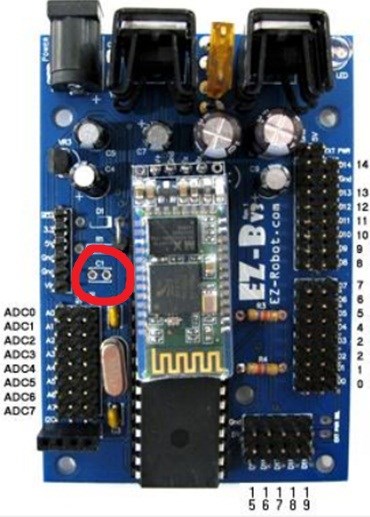pranav
India
Asked
— Edited
Yesterday when I was looking at my EZ-B, I observed a new kind of Capacitor in the place C1 of EZ-B... I have known about electrolytic capacitors and ceramic capacitors.. What kind of capacitor is placed at C1... It neither looks like ceramic or electrolytic.. What is it? And how are those kind of capacitors useful?
The image I uploaded is from EZ-B Technical Manual... But there is no capacitor soldered yet in it...


@pranav the cap you are referring to is called a film capacitor, the value is 0.1uF. These capacitors are quite often used as noise filters in microcontroller based electronics. Since capacitors are transparent to AC signals, they strip the noise off voltage and signal lines and usually route them to Ground (negative reference) where it is dissipated.
Thanks @skater_j10 , That is really useful information... I'm finding EZ Robot Community very friendly and people here share their views and help others build robots.. Especially for students like me who don't get such opportunities here at my place... Not even in our colleges... We are not suppose to ask any doubts... But EZ Robot has given me an opportunity to learn and build robots... People here are very generous and patiently answers any silly and simple doubts we have... Thanks everyone.. Thanks @DJ , @Rich , @Technopro and everyone else... Loving to be a part of it...


@pranav, you're always welcome here. The use of capacitors as noise filters is very useful. I normally always put a capacitor with voltage or ground just to avoid noise fluctuations. Even if ground or high from a voltage source fluctuate, this cause considerable damage to the functionality of a circuit, to avoid this, we use filtering capacitors. Also, don' forget to use Zener diodes of appropriate characteristics at voltage lines. These are just means of idiot-proofing a circuit and making it more and more rugged to survive different test conditions.
pcb assembly prototype